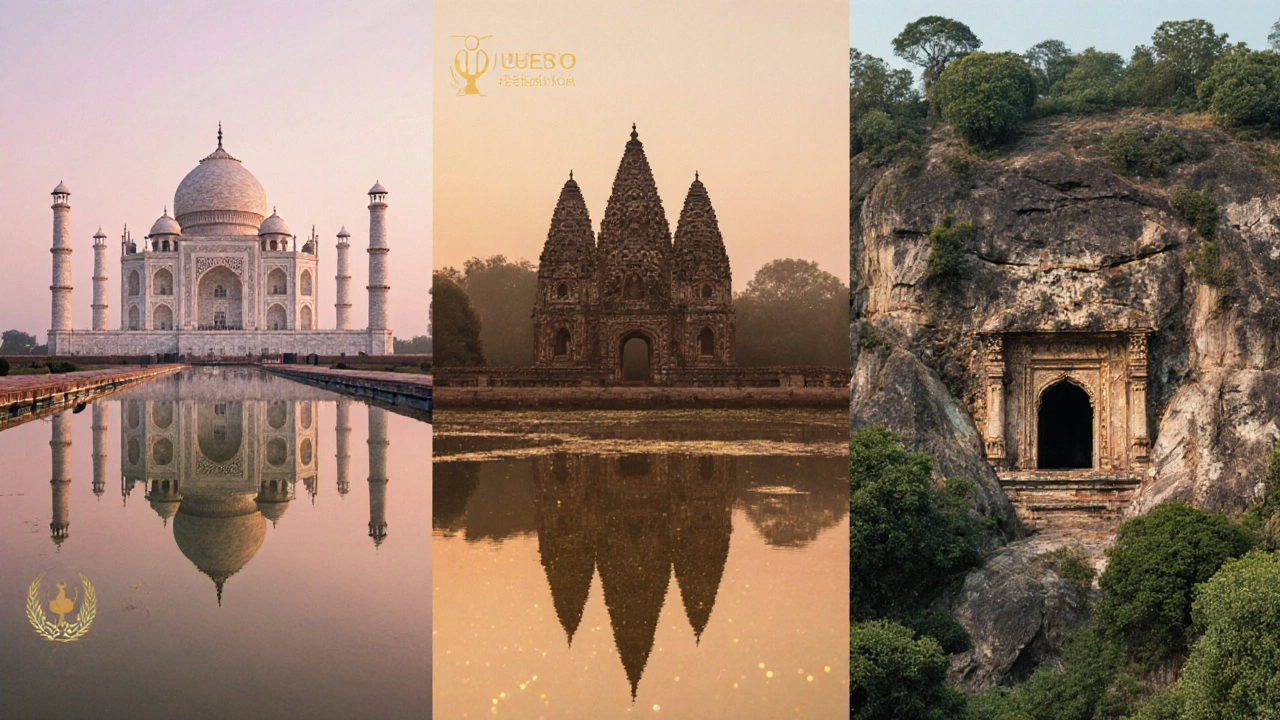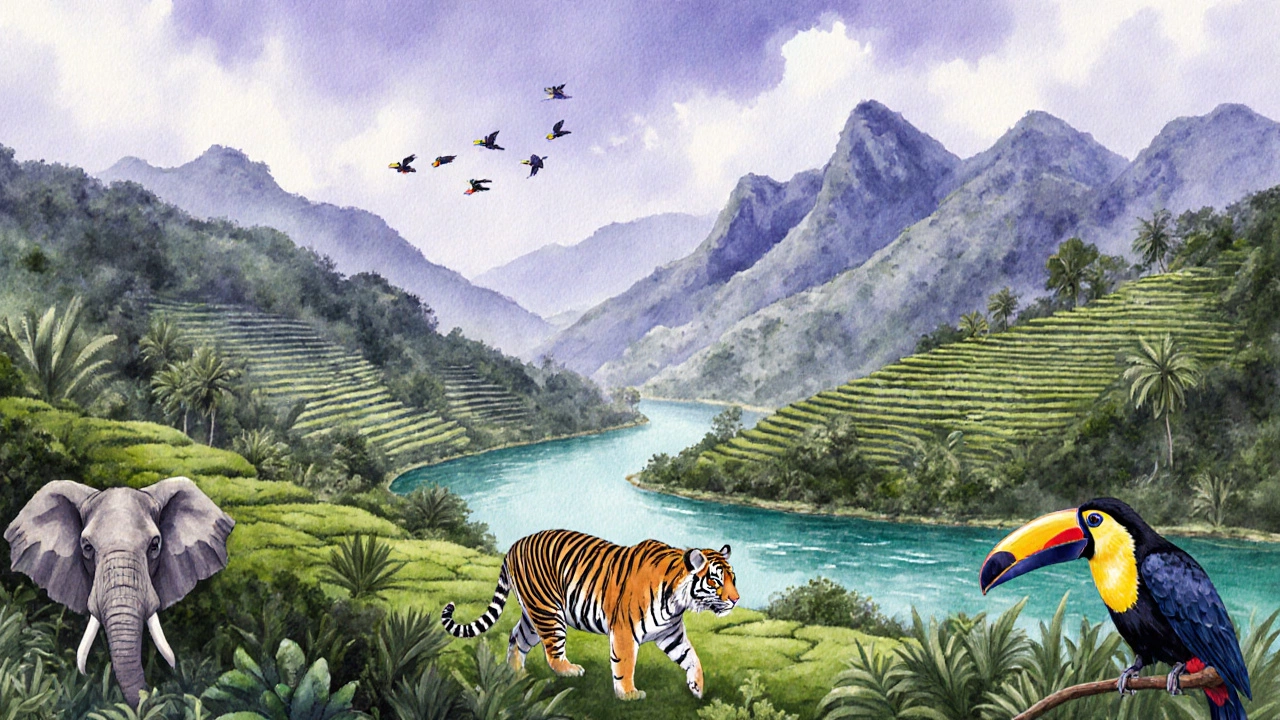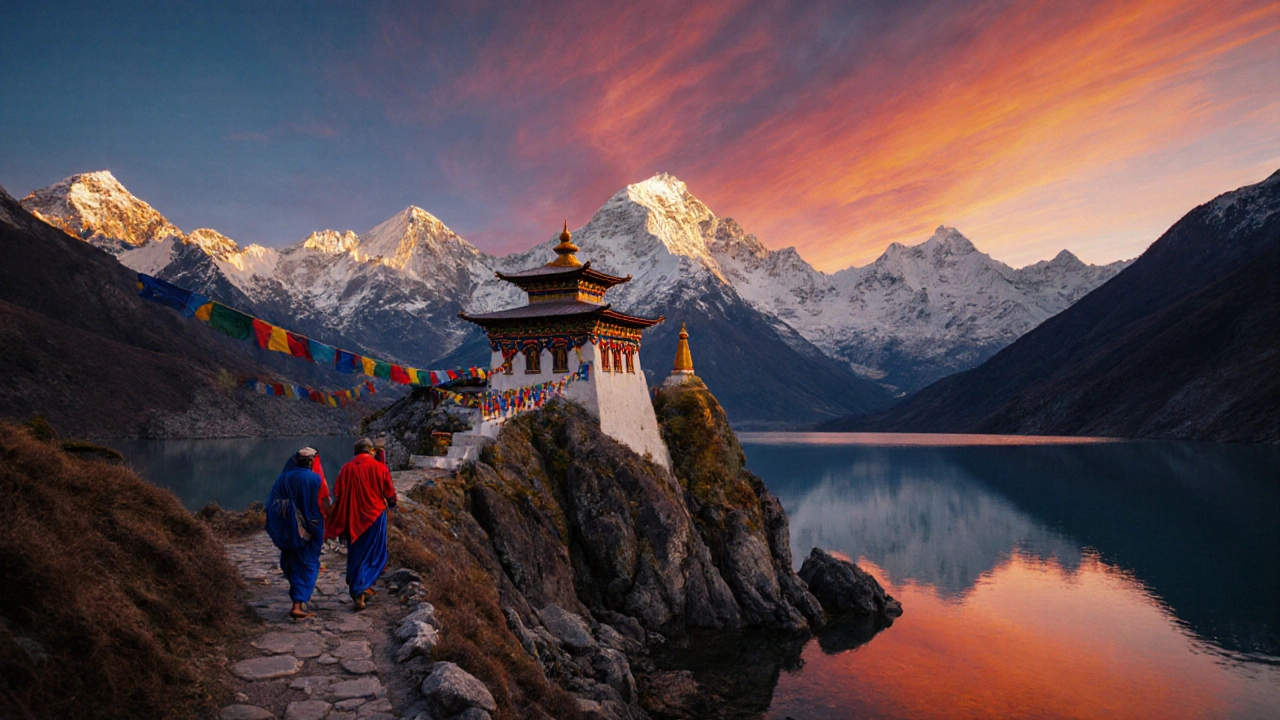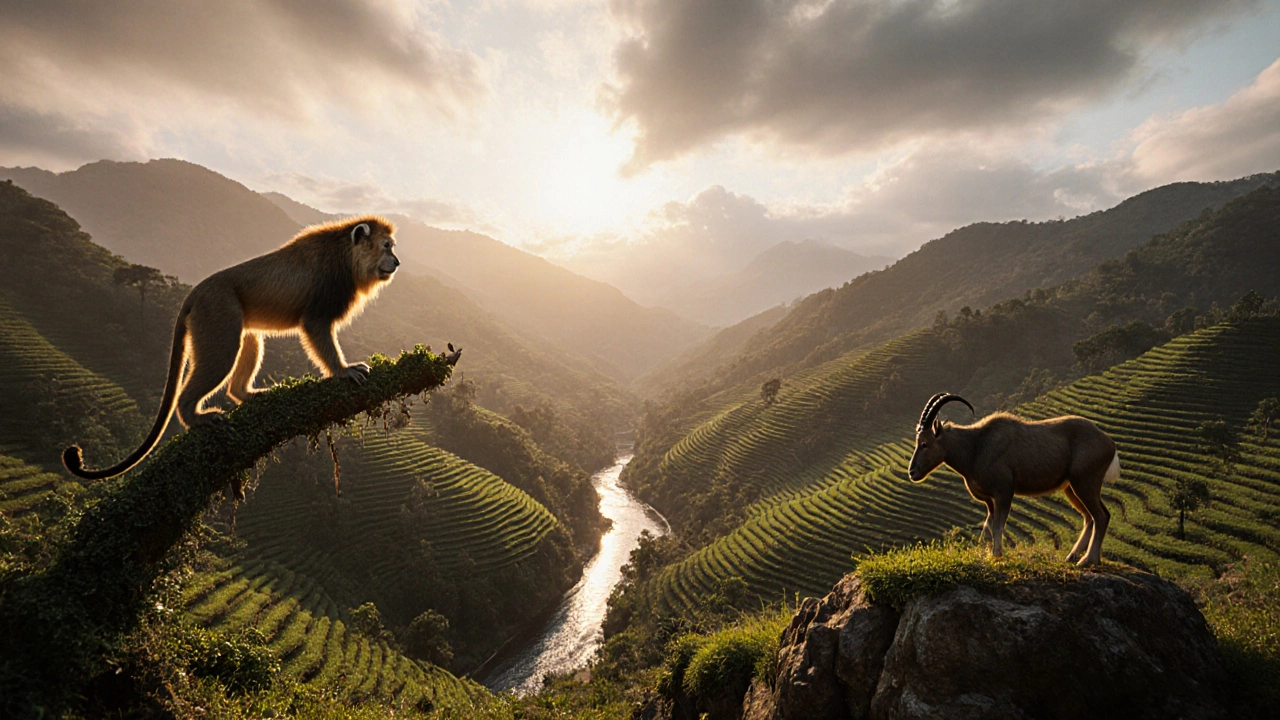How Many UNESCO Heritage Sites Are in India? 2025 Count

India's UNESCO Heritage Site State Comparison
Select a state to see heritage details
Choose a state from the dropdown above to view its UNESCO World Heritage Sites
When travelers talk about the grandest places to visit, UNESCO World Heritage Sites are the globally recognized monuments, cities, forests and cultural landscapes that meet strict criteria for outstanding universal value instantly come up. India is a sub‑continent with a mosaic of civilizations, empires and natural wonders and it now hosts one of the largest collections of these sites in the world. If you’ve ever wondered exactly how many heritage sites in India hold the UNESCO badge, read on - the numbers, the types, and the latest additions are all laid out here.
Key Takeaways
- India has 42 UNESCO World Heritage Sites as of July2025.
- 30 are cultural, 9 are natural, and 3 are mixed properties.
- The highest concentrations are in TamilNadu, Maharashtra and Karnataka.
- Four sites were added between 2020 and 2025, the most recent being the "Fatehpur Sikri Conservation Zone" (2024).
- Understanding the UNESCO criteria helps you appreciate why each site made the list.
Current Total Count (2025)
The UNESCO World Heritage Committee reviews nominations each year and decides which places earn the World Heritage label announced its latest slate in June2025. The tally now stands at 42 sites spread across the nation. This makes India the third‑largest holder of World Heritage Sites after Italy (58) and China (56). The growth reflects both new nominations and successful extensions of existing sites.
Breakdown by Category
UNESCO distinguishes three main categories:
- Cultural - monuments, historic towns, archaeological sites.
- Natural - national parks, wildlife reserves, geological formations.
- Mixed - places where cultural and natural values intertwine.
India’s current portfolio reads:
| Category | Count | Examples |
|---|---|---|
| Cultural | 30 | TajMahal, Khajuraho Group of Monuments, Hampi |
| Natural | 9 | Western Ghats, Kaziranga National Park, Sundarbans |
| Mixed | 3 | MountAbu, Khangchendzonga National Park, Great Himalayan National Park |

Statewise Distribution
The sites aren’t evenly spread. Some states boast multiple entries while others have none.
- TamilNadu: 8 sites - including the Group of Monuments at Mahabalipuram and Brihadeeswarar Temple.
- Maharashtra: 7 sites - such as the Ajanta & Ellora Caves and the Elephanta Caves.
- Karnataka: 6 sites - including Hampi and Group of Monuments at Pattadakal.
- Uttar Pradesh: 5 sites - TajMahal, Fatehpur Sikri, and the Buddhist sites of Sarnath.
- Rajasthan: 4 sites - including the historic city of Jaipur (part of the “Hill Forts of Rajasthan” serial nomination).
New Additions (2020‑2025)
The last six years have been busy for Indian heritage advocates. Four sites earned the badge, and two existing sites were expanded.
- 2020 - Rani-ki-Vav in Gujarat (cultural).
- 2021 - Khangchendzonga National Park upgraded to a mixed site (natural + cultural).
- 2023 - The Great Himalayan National Park (natural).
- 2024 - Fatehpur Sikri Conservation Zone (cultural).
- 2025 - Extension of the "Western Ghats" biosphere to include the Nilgiri hills (natural).
How Sites Are Selected - UNESCO Criteria
Every nomination is judged against ten criteria (i‑x). The first six focus on cultural significance, while the latter four address natural importance. A site only needs to meet one, but many Indian entries satisfy several.
- Criterion (i): masterpiece of human creative genius - exemplified by the TajMahal.
- Criterion (iii): exceptional testimony to a cultural tradition - seen in the Khajuraho temples.
- Criterion (vii): outstanding natural phenomena - illustrated by the Sundarbans mangroves.
- Criterion (x): important habitats for biodiversity - represented by Kaziranga National Park.
Understanding these criteria helps travelers see why a site is special and what to look for on the ground.

Visitor Tips for Heritage Site Exploration
Planning a trip to a World Heritage Site can be smoother with a few insider pointers:
- Buy tickets online where possible - Sanchi and Hampi both offer e‑ticketing that cuts hours of waiting.
- Visit early in the morning to avoid crowds and heat, especially at open‑air monuments like Mahabalipuram.
- Respect local customs - many sites double as active places of worship (e.g., Brihadeeswarar Temple).
- Hire a certified guide for complex archaeological parks; the guide’s commentary often references the UNESCO nomination dossier.
- Carry a reusable water bottle and sunscreen - conservation areas such as the Western Ghats have limited facilities.
Preservation Challenges and Ongoing Efforts
While the UNESCO label brings global attention, it also highlights vulnerabilities. Climate change threatens coastal sites like the “Kakatiya Temple Complex” with rising sea levels. Urban expansion puts pressure on historic city cores such as Jaipur. In response, the Archaeological Survey of India (ASI) partners with local NGOs to fund restoration, implement visitor caps, and employ digital monitoring tools.
Community involvement is key. Programs that train locals as heritage stewards not only protect the sites but also create sustainable livelihoods - a win‑win that the UNESCO committee frequently cites in its progress reports.
Frequently Asked Questions
How many UNESCO World Heritage Sites does India currently have?
As of July2025, India has 42 UNESCO World Heritage Sites - 30 cultural, 9 natural and 3 mixed.
Which Indian state has the most heritage sites?
TamilNadu leads with eight sites, followed closely by Maharashtra and Karnataka.
What are the newest sites added in the last five years?
The most recent additions are Rani‑ki‑Vav (2020), Khangchendzonga National Park (2021), Great Himalayan National Park (2023) and the Fatehpur Sikri Conservation Zone (2024).
Can I visit all sites in a single trip?
Logistically it’s tough; the sites span the length of the country. A well‑planned itinerary can cover 10‑12 sites in two weeks, focusing on a region (e.g., the Golden Triangle plus nearby forts).
How does UNESCO decide which sites qualify?
A country submits a nomination dossier that demonstrates the site meets at least one of ten criteria (i‑x). The International Council on Monuments and Sites (ICOMOS) reviews cultural nominations, while the International Union for Conservation of Nature (IUCN) evaluates natural sites. Their recommendations go to the World Heritage Committee for final voting.
